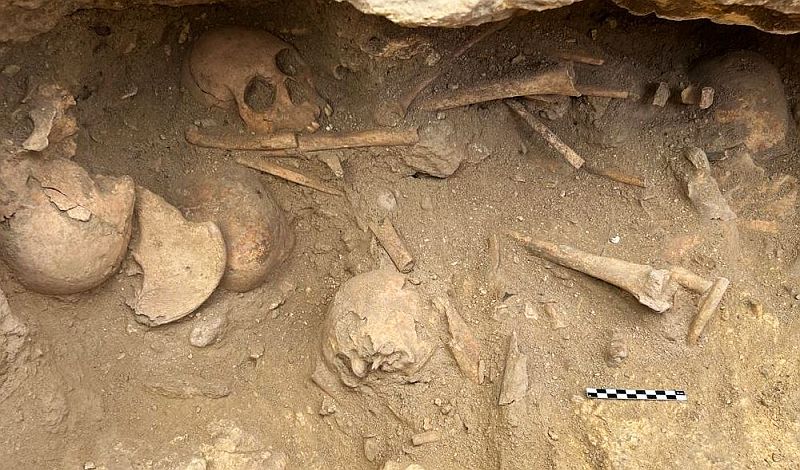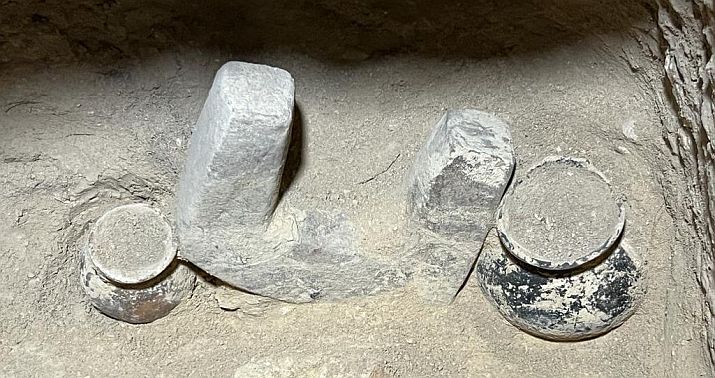
San Juan Ixcaquixtla, Puebla, Mexico – The Ministry of Culture of the Government of Mexico, in collaboration with experts from the National Institute of Anthropology and History (INAH), is currently unraveling the mysteries of a 1,500-year-old tomb from the Mixtec-Zapotec tradition. This tomb, believed to be associated with a lineage of merchant-warriors, remained hidden beneath the town’s streets until recently.
For centuries, the funerary site remained concealed beneath the bustling streets of San Juan Ixcaquixtla. It was only when urban development work was underway that the town’s City Council President, Santiago Miranda de Aquino, stumbled upon this archaeological treasure and promptly alerted the INAH Puebla Center. In September 2023, an archeological and physical anthropology team was dispatched to the site to begin their explorations.
Archaeologist Alberto Diez-Barroso Repizo, who is leading the team of specialists, explains that San Juan Ixcaquixtla, perched on a hill overlooking a valley, was constructed atop a vast archaeological site. The site is home to numerous mounds or “teteles,” as the Mixteca Baja community refers to them. Notably, these mounds are concentrated in the center of the town.
Discoveries such as these continue to emerge when excavation and construction work are conducted. In April 2004, Tomb 1, featuring three chambers and remarkable wall paintings, was uncovered. A decade later, in September 2013, another tomb was found adjacent to the town’s municipal market.
With this latest discovery, the heart of San Juan Ixcaquixtla now boasts three intact funerary complexes. The untouched nature of these finds promises a deeper understanding of the burial customs of the pre-Hispanic era, states the lead archaeologist.
Thus far, the archeological team has identified two chambers, each measuring 4 by 2 meters, as part of a more extensive funerary complex. These chambers contain the skeletal remains of at least twenty individuals.
The research team, comprised of physical anthropologist Dioselín García Díaz and archaeologists Alexis Daniel Rodríguez Olivarez and Gibrán Alejandro Martínez González, with support from Javier Fernando Rodríguez de la Rosa and Israel González Hernández, is meticulously recovering the burials and their accompanying artifacts.

Among the offerings are 150 ceramic vessels, a human bone with intricate carvings, a votive ax, and three yokes of Mesoamerican origin. These yokes, shaped like a “U,” are typically associated with votive axes and have been documented in mortuary contexts in various regions, including the Sierra Norte de Puebla, the Gulf Coast, and the Mayan area.
Alberto Diez-Barroso suggests that, based on the ceramics’ design and style, the funerary context dates back to the Classic Mesoamerican period (100-650 AD). He highlights that “the burials are indicative of a mortuary tradition where multiple individuals were interred, likely part of a lineage of merchant-warriors. This suggests a ritual of ancestor worship, given that some of the remains belong to adults.”
The director of the INAH Puebla Center, Manuel Villarruel Vázquez, emphasizes the importance of preserving the municipality’s archaeological heritage to safeguard its history and identity. Consequently, the ongoing investigation will integrate the data collected from the two previously discovered tombs.
The study will continue until all the chambers within this mortuary complex are explored, potentially totaling at least three.






